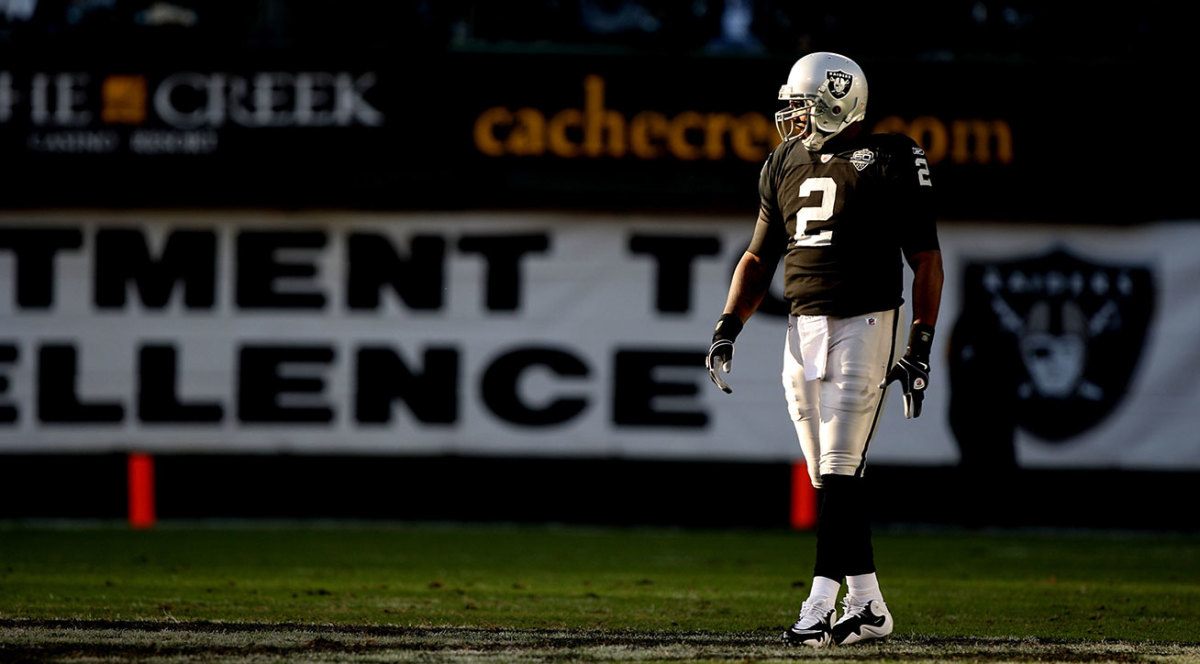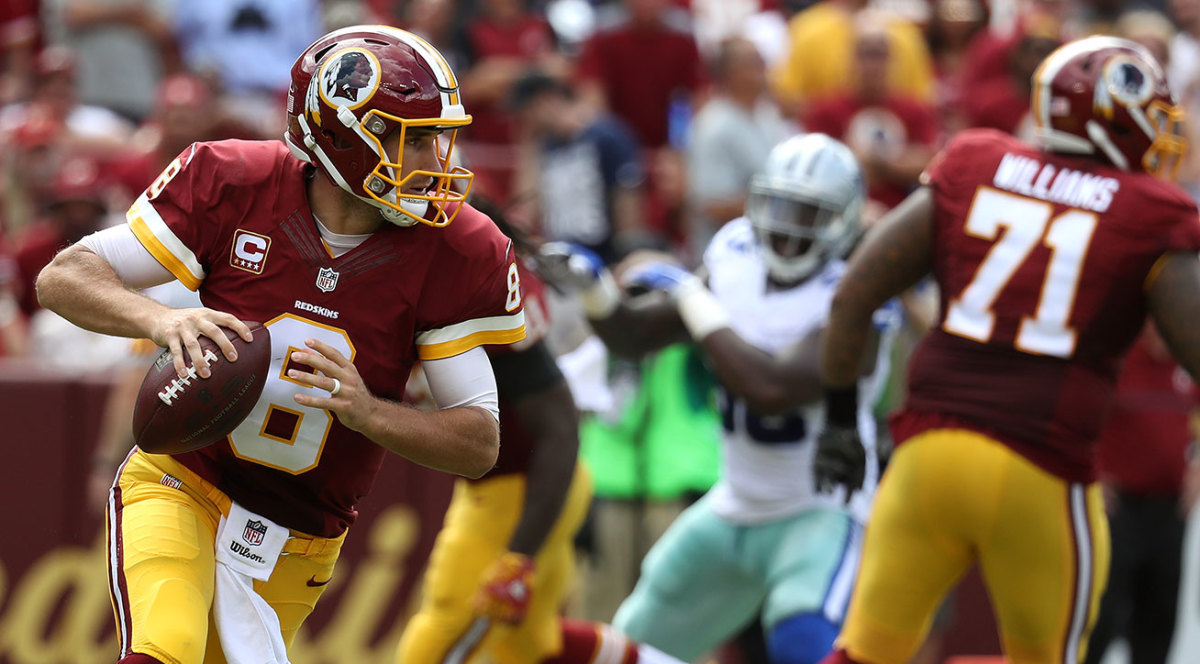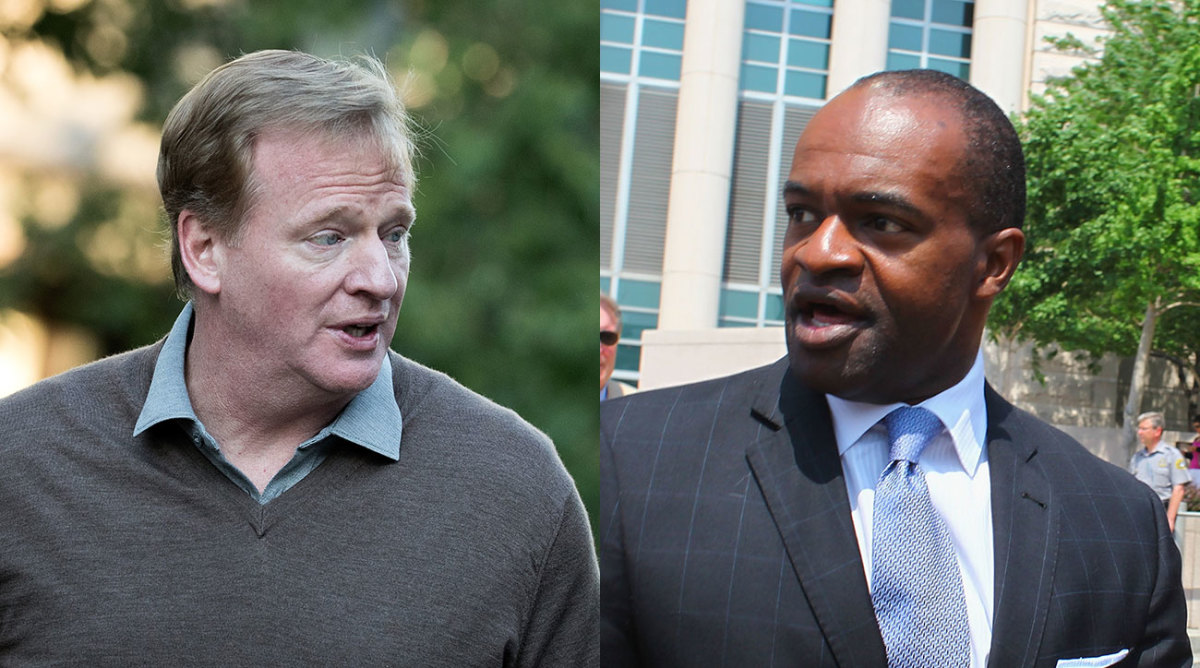The CBA at Halfway, Part I

It is hard to believe, but we have reached the halfway point of the governing document for the business and law of the NFL, the Collective Bargaining Agreement (CBA) between the owners and the players. Signed in August 2011, it was negotiated to last an extraordinary 10 years, with no opt-outs for either side. It is set to expire after the 2020 season.
I often am baited to chime in on the CBA with easy statements such as “The NFLPA got screwed!” While there are certainly deficiencies for the players, it’s important to avoid “hot takes” about such a dense and multilayered agreement and take a more measured look. Having spent a decade each on the side of labor (as a player agent), and management (in the Packers’ front office) and now several years analyzing the business of football in media and academia, I hope to enhance your understanding of the CBA at the halfway point.
Much has been said and written about the CBA, with the bulk of the attention focused on a small section of the document—Article 46—that remained unchanged from previous CBA: that granting the commissioner power over “conduct detrimental” and the authority to discipline players for their conduct. While this is certainly an area that has been a focus for the NFLPA post-CBA—with expenditures of tens of millions in legal fees—it is, in the scheme of things, more of a distraction than a primary issue to examine in looking at the CBA at its halfway point. That primary issue would be the same one in business and legal agreements in all sports: the money. I will address that aspect in Part II of this column, next week. For now let’s look at some other issues emanating out of the CBA at the halfway point.
Reduced Offseason, Reduced Contact
One of the lasting impacts of this CBA negotiation was to legislate the reduction of practice time and practice intensity. It was a priority for the union and an easy and necessary “give” for the owners as player health and safety became a paramount concern.
The NFLPA leadership under DeMaurice Smith has veered from former NFLPA head Gene Upshaw’s direction in some cases—especially the notion of being friendly with the commissioner—but both regimes have been vigilant in protecting players from overzealous coaches in the offseason. This week’s discipline of the Seahawks for violating the “no-live-contact” rule—the team was docked a fifth-round pick and $400,000; coach Pete Carroll was fined $200,000—was another in a succession of punishments to teams for excessive contact in the offseason. I remember Upshaw once telling me “These coaches sit around in the offseason and are bored to death. They see players and can’t help themselves.”
The union’s emphasis on this area not only continued Upshaw’s hawklike watch over team zeal but also prioritized players’ time away from team facilities, suggesting they could pursue educational and degree opportunities during winter and early spring months. Teams had their maximum 14-week program reduced to a maximum nine-week program that is phased in with varying degrees of activity and gradations of intensity.
Further, the NFLPA succeeded in reducing in-season contact by limiting padded “live” practices to a total of 14 throughout the season, effectively reducing the number of subconcussive blows players receive in non-game situations. Indeed, the NFL now has less practice contact than most colleges and high schools.
It would not have made any business or moral sense for the NFL to put up much of a fight in this space. They were emerging from a time—depicted in “League of Denial” and “Concussion”—that was not a good look. They (and the union) were called out in 2009 Congressional hearings and compared to—gasp—the tobacco industry for lax efforts on head safety. And concussion lawsuits were swirling. Fighting against changes to the game that improved player health and safety would have been a public relations nightmare for the league. And, more importantly for it, giving in on this issue allowed the league to leverage gains in other areas. As one NFL owner said to me during the negotiations, “I said to Roger, ‘You mean we give them less hitting in practice and we can get the money we want? Where do I sign?’ ”
• SUBSCRIBE TO THE MMQB PODCASTS:Peter King | Albert Breer | 10 Things
Since the reduced offseason has taken shape, there have been many complaints about the quality of the game, primarily from coaches who blame the lack of “live” tackling and fewer instructional opportunities for younger players. True or not, CBA negotiations were between owners and players; coaches were not consulted. They are a constituency often caught awkwardly between management and labor; any concerns they had about reductions in offseason practice and in-season contact, if they even knew of the proposed changes, succumbed to larger issues in the negotiation.
As to whether these changes have achieved their purpose—players being more refreshed coming into training camp—that is unclear. It certainly doesn’t appear to have made careers longer: The labor force is getting younger every year, reduced contact or not. As to whether the game has gotten worse because of the reduced instructional time and contact, that is hard to evaluate. Ratings and popularity continue to be strong no matter the level of the product.
As these changes were an “easy give” from the NFL side, perhaps a reciprocal “easy give” from the NFLPA in the next negotiation would be to allow for younger players—with three or fewer years in the league—to have more coaching in the offseason should they want to be around the facility and their coaches. Certainly, if enough coaches were/are in owners’ ears about this issue, the union could make some gains here as ownership did before.
Player Benefits
While other areas have received much media and fan attention, contractual benefits are crucial to the livelihood of all players and their families in a collision sport.
In 2015 the team salary cap number was $143.28 million. However, teams were also responsible for an additional $37.55 million in fully funded benefits, bringing the total team cap-plus-benefits number to $180.83 million. This benefits portion almost goes unnoticed by the general public.
Player benefits consist of a wide variety of items, including among other things: (1) pensions, (2) group insurance programs, (3) injury protection for 2011-2015, (4) workers’ compensation, (5) moving and travel expenses, (6) postseason pay, (7) player medical costs, (8) severance pay, (9) player annuities, (10) a performance-based pool, (11) tuition assistance and (12) neurocognitive disability benefits
The current CBA upgraded benefits for players—past, present and future—in many respects. Now, all players who play in an NFL game during span of this CBA qualify to remain in the NFL medical plan for the rest of their life. This is a huge step forward for the players; under previous agreements, post-career healthcare for retired players ended after only five years.
Players who sustain serious football injuries are entitled to an enhanced injury protection benefit. Now, players can receive up to $1.15 million in the year after injury, and $550,000 for the following year—with these amounts increasing modestly under the remaining years of the agreement. Under the previous CBA, players were only eligible to receive up to $350,000 for the year after injury, and no money at all for the subsequent year.
Additionally, $1 billion in new funds is committed to retirees over the length of current agreement. Owners and players now contribute to a $620 million “Legacy Fund” dedicated to assisting pre-1993 retirees.
Again, in the bigger picture overall, the NFL could not fight too hard against improved health benefits to NFL players, and these were concessions that were important to make. Indeed, in talking to NFL executives about the CBA, they immediately bring up these improved benefits, not wanting the focus on areas more important to ownership that were “wins” over the union.
• THURSDAY NIGHT FOOTBALL: Watch the Twitter stream of the Thursday night game live on SI.com
Rookie Sacrifice
Incoming players to the NFL had no seat at the CBA bargaining table. While all other issues separated the NFL and NFLPA, this one galvanized them. Bloated contracts for unproven rookies, especially for busts such as Ryan Leaf and JaMarcus Russell, had become embarrassments for both sides. Rookie contracts were an easy sacrifice; players who had yet to enter the league had no one speaking for them, with the possible exception of top agents, who also had no voice in these negotiations. Thus a sledgehammer was taken to rookie compensation.
A wage scale was set up where, the moment they were drafted players—and their agents—knew their bonuses and overall contracts for the next four years. While there are still negotiable issues, such as offset language and bonus payment terms, the CBA ended any drawn-out negotiations for rookie players (Joey Bosa being a rare exception).
Although they will draw no sympathy, the biggest victims—in terms of guaranteed earnings—have been the draft’s elite players. While No. 1 overall picks under the previous CBA such as Matthew Stafford and Sam Bradford approached $50 million in guaranteed earnings before setting foot on the field, top picks since, such as Cam Newton, Andrew Luck and Jameis Winston, received less than half that guaranteed amount.

Beyond contract values, owners were able to negotiate more substantial changes. Drafted rookies must sign mandatory four-year deals, with no ability to renegotiate for three seasons. This change has had a dramatic effect of teams keeping their thumb on undervalued young players who have to play an additional year or two under discounted terms before being rewarded. And when teams do negotiate after the required three years, they often dictate terms, knowing that the player’s only other option is to return to an existing contract paying, according to the rookie contract, under $1 million.
Finally, for first-round picks, the team’s control extends yet another year. The CBA allows teams to apply a fifth-year option, further delaying large commitments (with the option of the franchise tag after that, discussed below).
The new rookie compensation system is the owners’ gift that keeps on giving.
18-Game Season…or Not?
I can’t say for sure, but the issue of an “enhanced” regular season may well have been nothing more than a strategic negotiating tool once owners gauged the intense negative reaction to it from the players. There may be some notable exceptions among ownership, but the majority of NFL owners were not adamant about this, and network partners were ambivalent as well. And since that time, a more cost-efficient revenue model with less negative reaction from players, fans and media has been floated: an expanded postseason.
Postseason pay is based on a CBA schedule of earnings that amount to a fraction of what players make during the season. Star players earning hundreds of thousands of dollars a week during the regular season make roughly $20,000 a week for the first couple rounds of playoffs.
Switching to an expanded playoff model allows ownership to extend the season at a fraction of the financial and emotional cost of an 18-game regular season. It would be done at the time of year with the highest television ratings and most attractive teams, all with relatively modest earnings for the product (players).
Owners’ Game of Tag
The franchise tag issue appeared to be a low priority for the NFLPA—either dissolving it or making its terms better for the players. Not only does it continue to be a staple of the CBA, as it has been since 1993, but its value for teams was improved. Now, instead of calculating the amount of the tag at each position by taking a look back at the previous year’s numbers, the calculation now looks back five years and pegs the number as a percentage of the salary cap. As a result, it took until 2014 for some of the new franchise tag values to match the numbers from 2009!
The rationale for the union’s not pressing the franchise tag issue—that it only affects 10 or so players a year in a union of 2000 players—makes sense on its face. However, as noted in this space several times, the tag has more enduring effects. As with the Broncos and Von Miller this summer, teams can negotiate aggressively, knowing they have the backstop of the tag. Or teams can simply not negotiate at all, as the Chiefs and Redskins did this year with Eric Berry and Kirk Cousins, respectively, content to preserve the status quo as they continue to evaluate their options. And now that most teams are flush with cap room, applying the tag is not a cap imposition as it once was.

I remember the bargaining history behind the inception of the tag in 1993: It would be the NFL version of the NBA’s “Larry Bird Rule,” ensuring that true franchise quarterbacks such as Dan Marino, John Elway, Troy Aikman, Brett Favre, etc. would remain as signature players for their teams. Now, the tag has been transformed into a more potent weapon, applied to pending free agents no matter their position and restricting any potential movement of top players.
My sense is that the tag is here to stay; there are too many other issues for the union. However, there should be stricter enforcements and sanctions in place for teams that use the tag simply as a placeholder with no intent to reward the player beyond the one-year requirement.
Commissioner Power
When historians look back on Roger Goodell decades from now, the hallmark of his tenure, besides the accelerated growth of NFL revenues, will be his emphasis on player conduct. Indeed, I have often referred to him as the Conduct Commissioner.
While ownership certainly wants players who are upstanding citizens, I have sensed this issue to have always been more of a Goodell one than an ownership one. Having been a team executive in the NFL under both Goodell and his predecessor, Paul Tagliabue, I saw the stark difference firsthand. Tagliabue, a lawyer, was adamant about letting the legal process play out before rendering discipline (which he rarely did) while Goodell has been much more proactive in broadly using his “conduct detrimental” powers over player conduct. He was willing to cede final say in cases involving drugs and steroids, but not regarding player conduct.
The NFLPA’s perception of Goodell as “judge, jury and executioner” is hardly new. As one top union executive told me at the start of the 2011 CBA negotiations, “We’ve got to get independent arbitration; Goodell has jumped the shark.” Although it’s not clear how high a priority it was on the NFLPA list, priorities changed in the horse-trading to make a deal; Goodell’s power in this area remained unchanged.
In the next negotiations, the commissioner’s disciplinary power will be far down the list of priorities for the owners.
Goodell has since been excoriated for being too soft (Ray Rice) and too harsh (Tom Brady). The real issue is that he is too arbitrary; we crave some sort of clarity in criteria and standards. Throughout this criticism from outside forces, however, Goodell’s support from his key constituents—owners and business partners—seems unshaken.
Every time we hear another public outcry against Goodell, I imagine each owner thinking with a satisfied grin, “Better Roger than me.” Compared to Goodell, how much criticism did we hear directed at Ravens owner Steve Bisciotti when his team applied no discipline to Rice (until the video)? How much criticism was there of Colts owner Jim Irsay when it was his Colts, not Goodell, who demanded an inquiry into the Patriots and their footballs? Goodell is the convenient punching bag for owners to avoid the harsh light.
The union had an apparent opening two years ago following the Rice debacle, when Goodell spoke of including the NFLPA in formulating a new conduct policy. Those words, however, were just that, as the NFL drew up and instituted a new policy while ignoring the union, prompting a grievance. That grievance resulted in an arbitrator opinion this April that allowed the policy and its contested features of paid leave and the exempt list to remain in place (although it has never been exercised in the two years of its existence).

For future bargaining purposes, the commissioner’s disciplinary power will be far down the list of priorities for the owners. Indeed, they quietly hope that the union prioritizes this issue in the next CBA negotiations, as they initially did before. Simply, owners see blood in the water to make further gains.
As with any negotiation, it is much easier to keep something in than to negotiate something out. Owners are in a position of strength on this issue and, if we have learned anything about this group, they are relentless negotiators. There could certainly be tweaks made in the commissioner power area—adding a union representative to the disciplinary process would be a reasonable one—but those tweaks would likely come with a price.
Next week, Part II of the CBA-at-halfway analysis looks at the number one priority for NFL owners coming into the negotiations. It will, simply, follow the money.
